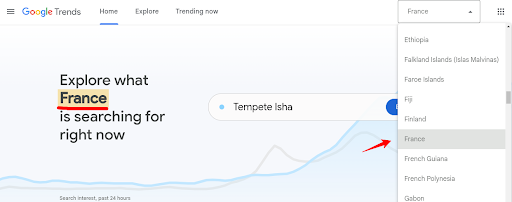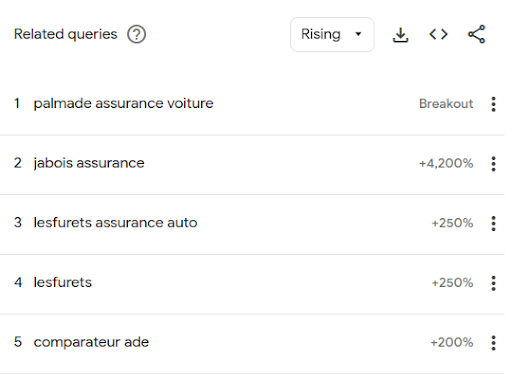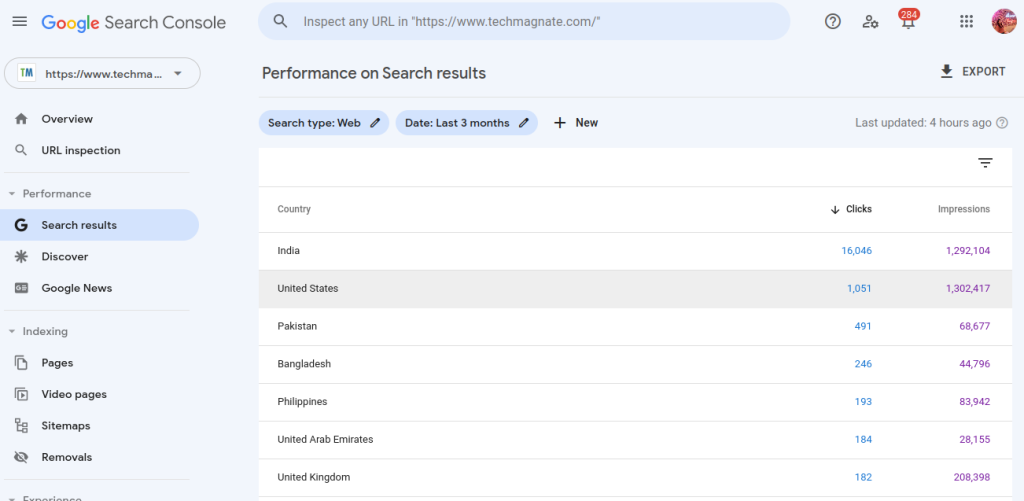International SEO: Strategy, Examples & Tools
January 24, 2024
Sarvesh Bagla
Summary: Ready to dominate the global market? This in-depth guide on International SEO provides practical insights to seamlessly implement SEO strategies across diverse countries. Explore real-world industry examples and discover essential tools to expand your reach to a wider audience.
Approximately 70% of online searches are conducted in languages other than English. This number is reported by Common Sense Advisory in their study titled “Can’t Read, Won’t Buy.”
A huge potential market is waiting to be catered. If your business allows you to have a target audience beyond borders, it is a must for a website to be adaptable to different languages and countries.
Adding a language translator plugin is not enough. There are various steps involved in ranking when it comes to international searches.
Sounds like too much work?
Fret not! We’ll tell you how to successfully implement international SEO for your business and reap the benefits of a broader audience.
What is International SEO?
International SEO, or Search Engine Optimization, is an action plan to make a website perform well in search engines around the world.
In simpler terms, it’s about making sure that your website shows up and is easily found by people using search engines in different countries and speaking different languages.
The process involves optimizing content, using the right keywords, and considering cultural and regional differences to resonate with the global audience.
What are the benefits of implementing International SEO?
For businesses that like to expand their customer base, international SEO plays an important role in getting that desired market.
- Global Reach: International SEO expands your website’s visibility to a worldwide audience.
- Targeted Traffic: Attract specific audiences from different regions.
- Improved User Experience for Local audience: Better user satisfaction by adapting content to diverse languages and cultures.
- Competitive Advantage: Outperform local competitors in various regions.
- Maximized Campaign ROI: Global marketing campaigns yield optimal results by capturing organic traffic.
- Cultural Adaptation Creates Connection with Brand: Understand and adapt to cultural differences in search behavior and preferences.
- Mobile Optimization: Optimize for mobile users globally, considering the prevalence of mobile searches.
- Search Engine Compliance: Adhere to international SEO best practices to stay in line with search engine guidelines.
5-Steps to Create a Successful International SEO Strategy
Creating an international SEO strategy involves a systematic approach to optimizing your online presence for global audiences.
Here’s a 5-step guide along with examples and recommended tools:
1. Market Research and Keyword Localization
Begin by understanding your target markets.
Conduct thorough market research to identify local preferences, language nuances, and search behaviors. Localize your keywords to align with regional search trends.

For instance, if you’re targeting the French market, use tools like Google Trends or Ahrefs to discover French-specific keywords (search terms used by French audiences). Instead of “car insurance,” you might need to optimize for “assurance auto.”


Check the related queries sections to analyze what your potential audience is searching for. It gives an idea of the target audience’s needs, requirements, and search terms often used.
2. Multilingual Website Structure
Develop a website structure that can be translated into multiple languages.
Implement hreflang tags or code to indicate language variations in your website. These tags can be country-specific or language-specific and help search engines understand the intended audience for each web page.
Read this Hreflang tag guide for beginners for a better understanding of the application of hreflang tags.


Websites like Amazon effectively use hreflang tags to serve content in different languages, ensuring users see the version most relevant to them based on their location and language preferences.
Be it the UK or Spain, Amazon’s website changes its content as well as the currency according to the search location.
3. Optimized Content for Cultural Relevance
Create content that resonates with the cultural and linguistic preferences of your target audience.
This goes beyond translation and involves adapting content to fit local customs, preferences, and cultural contexts.
McDonald’s tailors its menu and marketing content to suit local tastes. In India, the menu includes items like the McAloo Tikki burger or Mc Spicy Paneer to cater to the vegetarian preferences of the people. While the UK or US menu includes more bacon or beef options to cater to the needs of the local people.

Source: Scoopwhoop
4. International SEO Technical Optimization
An important aspect of applying SEO for an international audience is to make sure your website is technically optimized.
You can create an XML sitemap for each language and location for better search engine visibility.
Follow the steps:
1. Log in to your Google Search Console account and select the property (website) you want to manage.
2. Access the Sitemaps Section on the left-hand menu, and click on “Sitemaps.”
3. Click on the “Add/Test Sitemap” button.
4. Submit the first Language-Specific Sitemap:
- Enter the URL of the language-specific sitemap for the first language.
- Click the “Submit” button to add the sitemap to Google Search Console.
- Repeat the process for each language version of your sitemap.
5. After submitting the sitemaps, you’ll see the status of each submitted sitemap.
- Verify that there are no issues reported and that the sitemaps are successfully processed.
6. Navigate to the “Performance” section to monitor how well your pages are performing in different languages.

Then, check the search results of clicks or impressions based on the countries you’ve added.
5. Local Link Building and Social Signals
Build a strong local backlink profile and engage in social media to strengthen your international SEO strategy.
Local links and social signals contribute to your website’s authority in specific regions.
Connect with local influencers and businesses to earn region-specific backlinks. With the help of tools like Moz or Ahrefs, track backlinks and analyze the authority of local websites linking to yours.
Implementing these steps can create a robust international SEO strategy. Your website can cater to diverse audiences and ultimately boost your global online presence and business.
List of International SEO Tools
A few tools were mentioned in the strategy process. Furthermore, we are providing an international SEO toolkit to maximize the effectiveness of your strategies.
1. HubSpot
- HubSpot’s SEO software facilitates the creation of an international content strategy.
- Provides live tips for on-page SEO improvements.
- Focuses on creating content that resonates with an international audience as well as search engines.
2. Google Search Console
- GSC is instrumental in understanding how a website performs on Google globally.
- Reveals the queries driving traffic, and allows you to assess your position in SERP.
- Provides insights into global site impressions – crucial for refining and adapting your international SEO strategy based on actual user interactions.
3. Ahrefs
- Ahrefs serves as an all-in-one international SEO toolset.
- Analyze competitors’ rankings and identify the most effective keywords for your brand internationally.
- Provides a comprehensive view of your website’s SEO landscape in crafting strategies that can compete on a global scale.
4. Moz
- Moz conducts site audits to identify potential technical issues on your website.
- Tracks keyword rankings across a vast array of search engines.
- Analyzes backlink profiles, helping to assess performance in various regions and against global competitors.
5. Semrush
- Semrush is vital in identifying high-value local and national keywords for international targeting.
- Offers insights into competitors’ strategies globally, allowing you to optimize your content accordingly.
- Semrush’s daily tracking of SERP positions is crucial for monitoring and adapting to the dynamic nature of search engine rankings worldwide.
6. Google Analytics
- Helps analyze the impact of your content on an international scale by offering insights into user behavior, engagement, and performance metrics.
- Make informed decisions about your international SEO strategy based on real user interactions.
Each tool brings its unique features and insights, allowing businesses to tailor their approach and maximize their visibility in diverse international markets.
International SEO Best Practices
Irrespective of the method chosen for international SEO—language-centric or country-specific, whether outsourced or handled internally—the core best practices remain unchanged.
Let’s delve into these essential strategies, particularly within international SEO. We’re taking the e-commerce business as example.
1. Do Audience Keyword Research
Identify keywords relevant to each target market.
For a global shoe retailer, understanding regional terms like “trainers” in the UK versus “sneakers” in the US ensures precise keyword targeting for different English-speaking markets.
2. Create content that speaks your brand
Develop content tailored to the language and culture of each audience.
An online fashion store catering to the Middle East could create content that aligns with local fashion trends and cultural preferences, providing a more engaging experience.
3. Leverage the Use of Hreflang Tags
Prevent content duplication issues and improve user experience.
A multinational electronics brand implementing hreflang tags ensures that a user searching in Spanish is directed to the Spanish version of the website rather than a generic global page.
4. Strategically Structure URL as Global GPS
Enhance user understanding and align with global strategy.
An e-commerce site using subdirectories like /uk/ or /fr/ in the URL can effectively communicate country targeting, aiding both search engines and users.
5. Create Mobile-Optimized Designs on the website
Provide a seamless experience for mobile users globally.
A global online marketplace ensuring mobile responsiveness ensures that users in regions where mobile usage is predominant have an optimal shopping experience.
6. Localization of Content
Resonate with diverse cultural preferences for better engagement.
A food and beverage e-commerce platform offering recipes and product descriptions in local languages caters to the varied tastes and preferences of its international audience.
7. Speak the language your audience wants to hear
Facilitate informed decisions by presenting detailed information in multiple languages.
A tech gadget retailer providing product specifications and customer reviews in different languages ensures that users globally can confidently make purchases.
8. From payment to shipping: Tailor to taste
Adapt to diverse payment preferences and enhance transparency.
An international online marketplace accepting region-specific payment methods and communicating shipping costs tailors its services to the needs of customers in different markets.
9. Optimized Product Images
Enhance the user experience by ensuring fast-loading, high-quality images.
An e-commerce business thrives on images. A fashion website specializing in apparel can use optimized images that load quickly, providing a visually appealing experience and reducing bounce rates.
10. Local Language Customer Support
Offer effective communication and support in the preferred language of the users.
Be it in English, Spanish, or Hebrew, providing customer support in regional languages ensures easy assistance and resolves queries in their understandable accents.
By following this international SEO checklist, businesses can improve their search engine visibility. Improving the overall user experience for a diverse international audience can increase sales across borders as well.
International SEO – Your Gateway to Across-Border Sales
By embracing comprehensive keyword strategies, crafting localized content, and implementing technical elements businesses can unlock the door to global visibility and engagement.
And in this global journey, partnering with a specialized ally like Techmagnate adds an extra layer of expertise.
Our international SEO services, including targeted keyword research, content localization, and technical optimization, act as a compass, guiding your brand through the intricacies of global search landscapes.
Techmagnate’s commitment to leveraging advanced SEO strategies ensures that your brand not only reaches but resonates with international audiences.
Contact us today for a personalized one-on-one conversation.